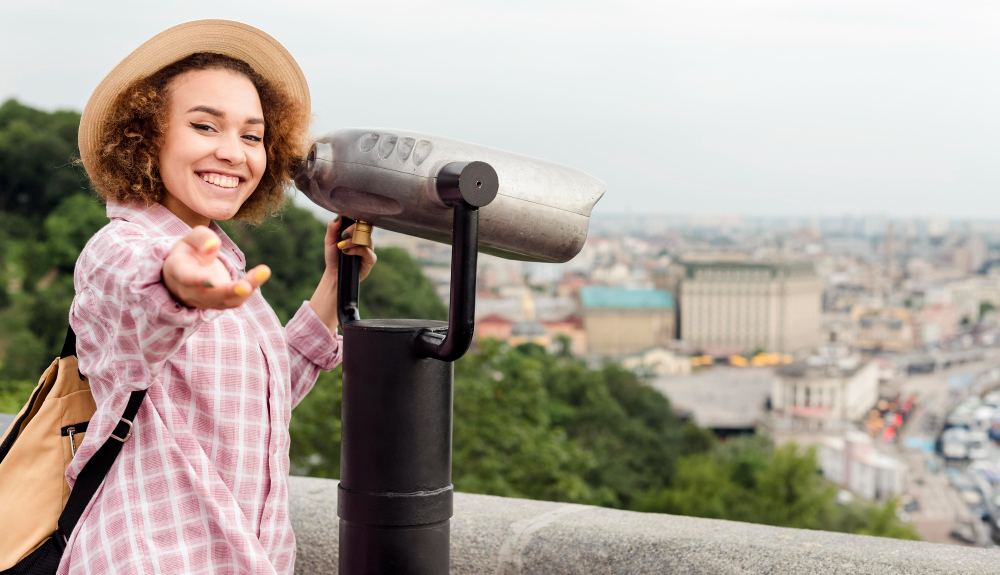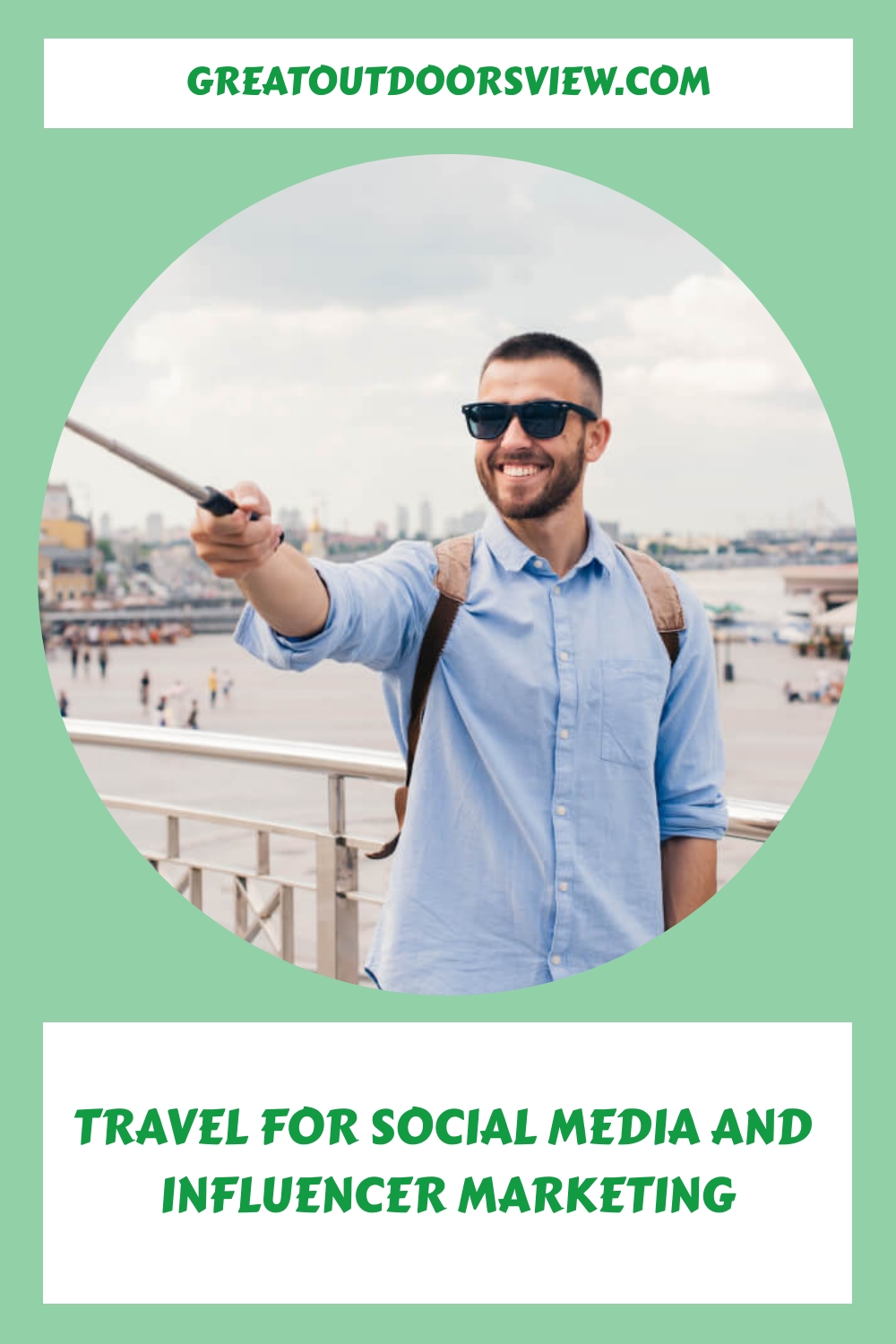
Introduction
In recent years, influencer marketing has become an increasingly important tool for promoting products and services, including in the travel industry. Influencer marketing involves partnering with social media influencers, who are individuals with a large following on social media, to promote products or services to their audiences. The goal is to leverage the influencers’ social media reach and influence to build brand awareness, increase sales, and connect with new audiences.
Defining Influencer Marketing
Influencer marketing is a form of marketing that involves partnering with social media influencers to promote products or services to their audiences. Social media influencers are individuals who have built up a large following on platforms such as Instagram, YouTube, TikTok, and other social media channels. These individuals typically have a strong online presence and are seen as authorities within their particular niche or industry.
One of the key differences between influencer marketing and traditional marketing is that influencer marketing focuses on building relationships with influencers, rather than targeting consumers directly. By partnering with influencers, travel brands can tap into their existing audiences and leverage their influence to reach new consumers who are interested in travel.
Types of Influencers
There are several different types of influencers, each with their own unique characteristics and audience. Macro-influencers are typically individuals with over 100,000 followers, while micro-influencers have between 10,000 and 100,000 followers. Nano-influencers have smaller audiences of up to 10,000 followers but are highly engaged with their followers and often have a strong influence within their niche.
The Impact of Influencer Marketing on the Travel Industry
In recent years, influencer marketing has had a significant impact on the travel industry. Travel brands have recognized the potential of partnering with travel influencers to reach a wider audience and promote their products and services in an engaging and authentic way.
One of the main ways that influencer marketing has affected the travel industry is through the rise of social media. Social media platforms such as Instagram, YouTube, and TikTok have become a central part of travel marketing, with influencers using these platforms to showcase their travel experiences and promote products and services.
Travel brands have also benefited from the increasing importance of Instagram, which has become one of the most popular social media platforms for travel influencers. Instagram’s visual nature makes it ideal for showcasing travel experiences, and the platform’s high engagement rates make it an effective tool for building brand awareness and engagement.

Social Media and Travel
The travel industry has undergone significant changes in recent years, driven in large part by the rise of social media. Social media platforms such as Instagram, Facebook, and Twitter have transformed the way people plan and experience their travels, and have opened up new opportunities for travel brands to connect with customers and promote their products and services.
1. The Changing Landscape of the Travel Industry
One of the biggest changes in the travel industry has been the shift towards more personalized and experiential travel. Consumers are no longer satisfied with cookie-cutter vacation packages or generic travel recommendations – they want travel experiences that are tailored to their interests, preferences, and lifestyles. This has led to a rise in niche travel offerings, such as adventure travel, wellness travel, and food tourism.
Social media has played a key role in this shift towards personalized travel, by providing travelers with access to a wealth of information and inspiration that was previously unavailable. Through social media, travelers can connect with like-minded individuals and communities, discover new destinations and experiences, and get insider tips and recommendations from locals and experts.
2. The Role of Social Media in Shaping Travel Behavior and Preferences
Social media has also had a profound impact on the way people make travel decisions. Today’s travelers are more likely to rely on social media for travel inspiration and recommendations than traditional travel guides or brochures. They use social media to research destinations, find accommodations, and book travel experiences.
In addition, social media has changed the way people share their travel experiences with others. Travelers now document their travels in real-time, sharing photos, videos, and stories with their followers on social media. This has created a new form of social currency, where travel experiences are valued not only for the enjoyment they bring but also for the social capital they can generate.
3. The Rise of Influencer Marketing in Travel Promotion
Influencer marketing has become an increasingly important part of travel promotion, as travel brands recognize the power of partnering with social media influencers to reach new audiences and promote their products and services in an engaging and authentic way.
Travel influencers, who have built up large and loyal followings on social media, are particularly well-suited to promoting travel products and services. They can showcase their travel experiences and provide recommendations to their followers in a way that feels authentic and trustworthy.

Influencer Marketing Strategies for Travel Brands
As the travel industry continues to evolve, influencer marketing has become an increasingly important strategy for travel brands looking to connect with customers and promote their products and services. Here are some key influencer marketing strategies for travel brands to consider:
1. Understanding the Travel Influencer Ecosystem
Before embarking on an influencer marketing campaign, it’s important to understand the travel influencer ecosystem. There are a variety of travel influencers out there, ranging from macro-influencers with hundreds of thousands of followers to micro-influencers with smaller, but highly engaged audiences.
Each type of influencer has its own strengths and weaknesses, and selecting the right influencers for your campaign will depend on your specific goals and target audience.
2. Selecting and Partnering with the Right Influencers for Your Brand
When selecting influencers to partner with, it’s important to look for influencers whose values and interests align with your brand. For example, if you’re a sustainable travel brand, you may want to partner with influencers who are passionate about sustainability and have a track record of promoting eco-friendly travel practices.
It’s also important to consider factors such as engagement rates, audience demographics, and past performance when selecting influencers to work with.
Once you’ve identified the right influencers, it’s important to establish clear expectations and guidelines for the partnership. This includes outlining the scope of the campaign, providing detailed instructions on what the influencer should post and when, and establishing a clear compensation structure.
3. Measuring the Impact of Influencer Campaigns on Brand Awareness and Sales
Measuring the impact of influencer campaigns is essential for understanding their effectiveness and optimizing future campaigns. There are a variety of metrics that can be used to measure the impact of influencer campaigns, including reach, engagement, brand awareness, and sales.
One effective way to measure the impact of influencer campaigns is through the use of trackable links and promo codes. By providing influencers with unique links or codes to share with their followers, travel brands can track how many sales were generated as a result of the campaign. This can help to demonstrate the ROI of the campaign and inform future campaign decisions.

Travel Influencers and Their Audiences
Travel influencers have become a major force in the travel industry, with their content inspiring and influencing the travel decisions of millions of people worldwide. Understanding the different types of travel influencers and their audiences is essential for travel brands looking to leverage influencer marketing to reach their target audience.
1. The Different Types of Travel Influencers and Their Niches
There are several different types of travel influencers, ranging from macro-influencers with millions of followers to micro-influencers with smaller, but highly engaged audiences. These influencers also have different niches, such as luxury travel, adventure travel, sustainable travel, and family travel.
Macro-influencers tend to have a broader audience, while micro-influencers typically have a more niche following. Partnering with macro-influencers can be a great way to reach a wider audience, while micro-influencers can be more effective at targeting a specific niche.
2. Analyzing the Demographics and Psychographics of Travel Influencer Audiences
Analyzing the demographics and psychographics of travel influencer audiences is essential for travel brands looking to target the right audience. Travel influencer audiences tend to be highly engaged and passionate about travel, and are typically younger and more diverse than traditional travel audiences.
When selecting influencers to partner with, it’s important to consider the demographics and psychographics of their audience. For example, if you’re targeting millennial travelers, partnering with an influencer whose audience consists mostly of older travelers may not be effective.
3. Engaging with Travel Influencer Audiences and Building Brand Loyalty
Engaging with travel influencer audiences is key to building brand loyalty and generating long-term value for your brand. This can be done through a variety of tactics, such as social media engagement, user-generated content campaigns, and loyalty programs.
Social media engagement is a great way to connect with travel influencer audiences and build brand awareness. This can include commenting on influencer posts, reposting user-generated content, and running social media campaigns that encourage followers to engage with your brand.
User-generated content campaigns are another effective way to engage with travel influencer audiences and build brand loyalty. By encouraging followers to share their travel experiences and tagging your brand, you can generate a steady stream of user-generated content that showcases your brand and resonates with your target audience.
Overall, understanding the different types of travel influencers and their audiences, analyzing the demographics and psychographics of travel influencer audiences, engaging with travel influencer audiences, and building brand loyalty are all essential components of a successful influencer marketing strategy for travel brands.

Ethics and Authenticity in Influencer Marketing
As influencer marketing has become more prevalent, it has also come under increased scrutiny from consumers and regulatory bodies. Maintaining ethical standards and authenticity in influencer marketing is essential for travel brands looking to build long-term trust and credibility with their audience.
1. The Importance of Transparency and Disclosure in Influencer Marketing
Transparency and disclosure are key principles of ethical influencer marketing. The Federal Trade Commission (FTC) requires that influencers clearly disclose any paid partnerships or sponsored content in their posts. This helps ensure that followers are aware of any potential biases and can make informed decisions about the content they consume.
In addition to legal requirements, transparency and disclosure also help build trust and credibility with followers. When influencers are transparent about their partnerships and sponsored content, it shows that they value their audience and are committed to maintaining authenticity.
2. Avoiding Fake Followers and Fake Engagement
Fake followers and fake engagement are significant concerns in influencer marketing and can damage the credibility and effectiveness of influencer campaigns. Travel brands should be cautious when selecting influencers to partner with, and use tools to identify fake followers and engagement.
In addition to partnering with legitimate influencers, travel brands can also work with micro-influencers who have smaller, but highly engaged audiences. Micro-influencers are typically more affordable than macro-influencers, and can often provide a more authentic and effective engagement with their audience.
3. Balancing Authenticity with Brand Messaging in Influencer Campaigns
Maintaining authenticity while also promoting brand messaging is a delicate balance in influencer marketing. Travel brands should work with influencers who align with their values and mission, and provide clear guidelines for the content they create.
It’s also important to ensure that the content is authentic and reflects the influencer’s personal experience with the brand. This can be achieved by allowing influencers creative freedom and avoiding overly scripted content.
In conclusion, maintaining ethical standards and authenticity in influencer marketing is essential for travel brands looking to build trust and credibility with their audience. This can be achieved by prioritizing transparency and disclosure, avoiding fake followers and engagement, and balancing authenticity with brand messaging in influencer campaigns.

Challenges and Future of Travel Influencer Marketing
While influencer marketing has become an effective way for travel brands to reach new audiences, it’s not without its challenges. As the social media landscape continues to evolve, travel brands must adapt their influencer marketing strategies to stay relevant and effective.
1. The Evolving Social Media Landscape and Its Impact on Travel Marketing
Social media platforms are constantly changing, and travel brands must keep up with the latest trends and features to remain competitive. For example, the rise of short-form video platforms like TikTok and Instagram Reels has changed the way influencers create content and engage with their audience.
Travel brands must also consider the changing behavior and preferences of social media users. For example, the COVID-19 pandemic has shifted travel priorities, with many consumers prioritizing health and safety over luxury or adventure.
2. Legal and Regulatory Issues in Influencer Marketing
In recent years, influencer marketing has become a popular strategy in the travel industry, as it allows travel brands to reach a wider audience and promote their products and services through social media influencers. However, as with any marketing strategy, there are legal and regulatory issues that need to be considered and addressed to ensure that influencer marketing campaigns are effective, ethical, and compliant with relevant laws and regulations.
One of the key legal and regulatory issues in influencer marketing in travel is disclosure. The Federal Trade Commission (FTC) in the United States and similar regulatory bodies in other countries require influencers to disclose any material connection they have with the travel brand they are promoting. Material connections can include receiving free travel, accommodations, or other perks in exchange for promoting the brand. Failure to disclose these connections can lead to fines and other penalties.
To comply with disclosure regulations, influencers should use clear and conspicuous language to disclose their relationship with the travel brand. This can be done through hashtags such as #ad, #sponsored, or #paid, as well as through clear and explicit language in captions and other social media posts. Disclosure should be placed in a location that is easily visible and not buried in a long list of hashtags or other text.
Another legal and regulatory issue in influencer marketing in travel is intellectual property. Influencers must ensure that they have the necessary rights to use any images, videos, or other content they share on social media platforms. This means obtaining permission to use copyrighted content or creating their own original content. Travel brands should also ensure that they have the necessary rights to use any content created by influencers as part of their marketing campaigns.
Data privacy is another important legal and regulatory issue in influencer marketing in travel. Influencers and travel brands must comply with data protection laws, such as the General Data Protection Regulation (GDPR) in the European Union and the California Consumer Privacy Act (CCPA) in the United States. This includes obtaining consent from individuals before collecting and using their personal data for marketing purposes, as well as ensuring that data is stored securely and only used for its intended purpose.
3. The Future of Influencer Marketing and Its Impact on the Travel Industry
As social media continues to play a significant role in travel marketing, the future of influencer marketing looks bright. However, travel brands must continue to adapt and evolve their strategies to remain relevant and effective.
One trend to watch is the rise of micro-influencers, who have smaller but highly engaged audiences. These influencers often provide a more authentic and personalized experience for their followers, making them an attractive option for travel brands.
Another trend is the use of augmented reality (AR) and virtual reality (VR) in influencer marketing. These technologies can provide immersive and interactive experiences for followers, allowing them to explore destinations and experiences virtually.
Conclusion
In conclusion, social media and influencer marketing have had a significant impact on the travel industry. Travel brands have recognized the importance of engaging with consumers on social media platforms and utilizing influencers to promote their products and services. The changing landscape of social media and evolving consumer behavior have presented new challenges for travel brands, but also opportunities for innovation and creativity.
Travel influencer marketing strategies should be carefully planned and executed, with a focus on selecting the right influencers, measuring the impact of campaigns, and ensuring transparency and authenticity. Building long-term relationships with influencers and their audiences can also lead to increased brand loyalty and advocacy.
As the social media landscape continues to evolve, travel brands must adapt and evolve their influencer marketing strategies to remain relevant and effective. The rise of micro-influencers, AR and VR technology, and other emerging trends provide exciting opportunities for travel brands to connect with their target audiences in new and engaging ways.
Read more articles here.
Generated with Pin Generator


